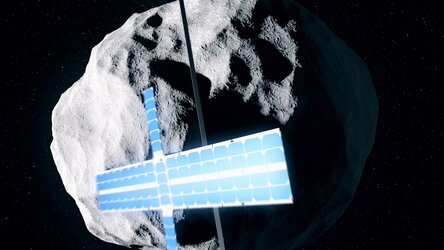Accept all cookies Accept only essential cookies See our Cookie Notice

About ESA
The European Space Agency (ESA) is Europe’s gateway to space. Its mission is to shape the development of Europe’s space capability and ensure that investment in space continues to deliver benefits to the citizens of Europe and the world.
Highlights
ESA - United space in Europe
This is ESA ESA facts Member States & Cooperating States Funding Director General Top management For Member State Delegations European vision European Space Policy ESA & EU Space Councils Responsibility & Sustainability Annual Report Calendar of meetings Corporate newsEstablishments & sites
ESA Headquarters ESA ESTEC ESA ESOC ESA ESRIN ESA EAC ESA ESAC Europe's Spaceport ESA ESEC ESA ECSAT Brussels Office Washington OfficeWorking with ESA
Business with ESA ESA Commercialisation Gateway Law at ESA Careers Cyber resilience at ESA IT at ESA Newsroom Partnerships Merchandising Licence Education Open Space Innovation Platform Integrity and Reporting Administrative Tribunal Health and SafetyMore about ESA
History ESA Historical Archives Exhibitions Publications Art & Culture ESA Merchandise Kids Diversity ESA Brand Centre ESA ChampionsLatest
Space in Member States
Find out more about space activities in our 23 Member States, and understand how ESA works together with their national agencies, institutions and organisations.
Science & Exploration
Exploring our Solar System and unlocking the secrets of the Universe
Go to topicAstronauts
Missions
Juice Euclid Webb Solar Orbiter BepiColombo Gaia ExoMars Cheops Exoplanet missions More missionsActivities
International Space Station Orion service module Gateway Concordia Caves & Pangaea BenefitsLatest
Space Safety
Protecting life and infrastructure on Earth and in orbit
Go to topicAsteroids
Asteroids and Planetary Defence Asteroid danger explained Flyeye telescope: asteroid detection Hera mission: asteroid deflection Near-Earth Object Coordination CentreSpace junk
About space debris Space debris by the numbers Space Environment Report In space refuelling, refurbishing and removingSafety from space
Clean Space ecodesign Zero Debris Technologies Space for Earth Supporting Sustainable DevelopmentApplications
Using space to benefit citizens and meet future challenges on Earth
Go to topicObserving the Earth
Observing the Earth Future EO Copernicus Meteorology Space for our climate Satellite missionsCommercialisation
ESA Commercialisation Gateway Open Space Innovation Platform Business Incubation ESA Space SolutionsEnabling & Support
Making space accessible and developing the technologies for the future
Go to topicBuilding missions
Space Engineering and Technology Test centre Laboratories Concurrent Design Facility Preparing for the future Shaping the Future Discovery and Preparation Advanced Concepts TeamSpace transportation
Space Transportation Ariane Vega Space Rider Future space transportation Boost! Europe's Spaceport Launches from Europe's Spaceport from 2012Latest

Drone test of Hera mission's asteroid radar
Thank you for liking
You have already liked this page, you can only like it once!
This drone hauled a model of the Juventas CubeSat high into the air, as a practical test of the antennas designed to perform the first radar sounding of the interior of an asteroid.
The shoebox-sized Juventas will be transported to the Didymos double-asteroid system by ESA’s Hera mission. Once it flies freely in space, Juventas will deploy a cross antenna to perform a low-frequency radar scan up to 100 m deep within the smaller of the two asteroids, Dimorphos. Such low frequencies result in long wavelengths of around 6 m, too long for most indoor measurement facilities.
“To verify the antenna characteristics, we performed this aerial test with the support of the Hexapilots drone company,” notes Martin Laabs of the Chair for Radio Frequency and Photonics Engineering of Technical University Dresden in Germany.
“For the most accurate measurements of the antennas’ radiation properties, they had to be as far away as possible from other objects, so the Juventas model was hung 10 m down from the drone, which was flown up to 50 m into the sky.”
The testing allowed them to assess the amount of radiated power of the antennas compared to radio frequency modelling, and also to assess at which altitude interference from ground reflections would cut out.
TU Dresden is working on the antenna placement, amplification and performance simulation for Juventas’s radar instrument, while Astronika in Poland is constructing the antennas and EmTroniX in Luxembourg is developing the signal generation system. The overall Juventas mission is being led for ESA by GomSpace.
Juventas's radar instrument, or JURA, is scientifically and technically overseen by Alain Hérique of France’s Institut de Planétologie et d'Astrophysique de Grenoble (IPAG) at the Université Grenoble Alpes and Dirk Plettemeier of TU Dresden.
-
CREDIT
TU Dresden -
LICENCE
ESA Standard Licence

Drone lifts Juventas CubeSat model

Testing mini-radar to peer inside asteroid

Hera’s Juventas CubeSat

Juventas CubeSat model in Hertz test chamber















 Germany
Germany
 Austria
Austria
 Belgium
Belgium
 Denmark
Denmark
 Spain
Spain
 Estonia
Estonia
 Finland
Finland
 France
France
 Greece
Greece
 Hungary
Hungary
 Ireland
Ireland
 Italy
Italy
 Luxembourg
Luxembourg
 Norway
Norway
 The Netherlands
The Netherlands
 Poland
Poland
 Portugal
Portugal
 Czechia
Czechia
 Romania
Romania
 United Kingdom
United Kingdom
 Slovenia
Slovenia
 Sweden
Sweden
 Switzerland
Switzerland

























